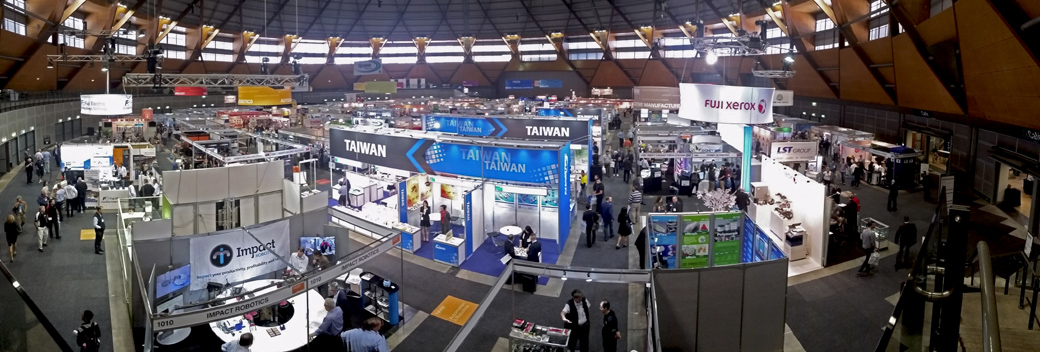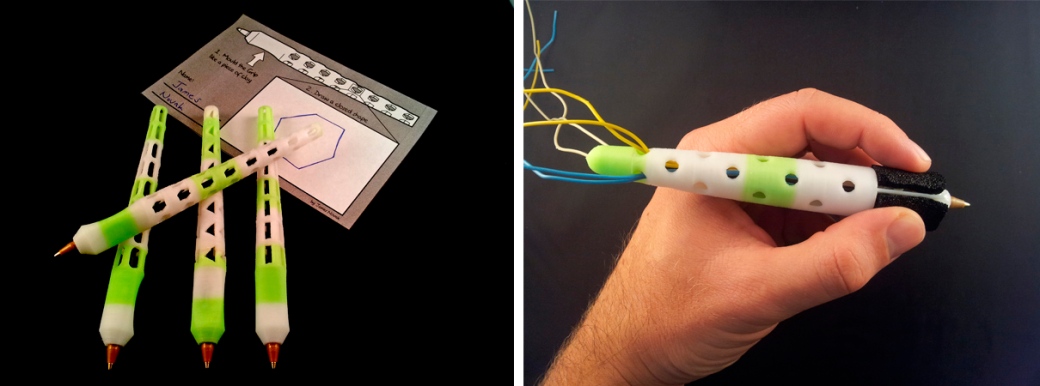
As mentioned in my last post, I recently returned from the RAPID 3D Printing Conference in Los Angeles and was completely blown away by the amazing talks and exhibitions over 4 days. A must-see event for anyone serious about the world of 3D printing and also 3D scanning. The photo above shows the huge exhibition floor that I easily spent a few hours exploring every day just to soak it all up. Here I’d just like to share a small selection of the things that really amazed and inspired me.

Two of the keynotes were of course extremely interesting, day 1 featuring Jason Dunn from the well known Made in Space program. Yes, the guys responsible for sending and operating the first 3D printer on the International Space Station! As a bit of a space nerd, who spent my first day before the conference visiting the retired Endeavour Space Shuttle, this talk was extremely inspiring. Just hearing about the extreme lengths they went through to design and test their printer, and receive approvals from an extremely conservative NASA, was a real insight into the challenges we face when we think about missions to Mars and beyond. For example did you know that it currently costs $10,000 to send just 1kg of material into space? Or that an astronauts time on board the International Space Station costs $40,000 per hour! So asking an astronaut to remove a simple 3D print can turn into a very costly process!
As always Terry Wohlers provided an insight into the current state of the 3D printing industry, and a vision for what to expect over the coming years. Beyond the stats that formulate part of the annual Wohlers Report, something that really stood out to me was that Airbus currently employ 35 people full-time dedicated to additive manufacturing. In just 3 years time (2018) they will be producing 30 tonnes of parts manufactured using 3D printing technology. 30 tonnes!!! That’s a lot of metal and plastic printers, and a lot of raw material being bought up by just one company. For those people still thinking 3D printing is only a prototyping technology, it’s time to wake up!
 With 3 days of presentations, there was of course something for everyone during the event. I took this photo during a presentation from 2 guys at Stratasys who have completely 3D printed functional skis and a snowboard. They have used a variety of internal cell structures to increase strength, as well as using a material called ULTEM 9085 which runs through the Fortus machines and provides extremely high strength and stiffness. Definitely a material I’d like to get my hands on, and hopefully possible to run through our Fortus 250mc at Griffith University.
With 3 days of presentations, there was of course something for everyone during the event. I took this photo during a presentation from 2 guys at Stratasys who have completely 3D printed functional skis and a snowboard. They have used a variety of internal cell structures to increase strength, as well as using a material called ULTEM 9085 which runs through the Fortus machines and provides extremely high strength and stiffness. Definitely a material I’d like to get my hands on, and hopefully possible to run through our Fortus 250mc at Griffith University.
By far the most crowded room I squeezed into was a presentation by Greg Mark, the CEO of MarkForged. If you haven’t heard of this company, look them up – their Mark One printer can print with continuous strands of carbon fiber and kevlar, all for under $5000. Judging by the crowd, and having the chance to spend 5 minutes talking with Greg on the exhibition floor, I think it’s pretty clear that everyone is excited by this company. The parts I played with, including a surfboard fin and motorcycle brake lever, were incredibly strong, and only featured a handful of layers of carbon fiber within the 3D printed parts. The Mark One is certainly on top of my wishlist, especially with my previous attempts of 3D printing fins for my kiteboard.

Despite all of this, by far the best part of RAPID was the show floor. Not only was there a diverse range of companies, from the big players like 3D Systems and Materialise down to newer start-ups, but every booth had a diverse range of 3D printed products, the sorts of products I’ve only seen written about online. This included the first functional 3D printed motorcycle, the New Balance custom track shoes, numerous 3D printed medical devices and prosthetics, piles of crazy lattice structures in metals and plastics, fashion, furniture… The list is endless! Hence why my brain hurt by the end of each day! But what was great was the ability to get up close to these products, touch them, question them, and discuss them with people that were involved in creating them.

A personal highlight was of course seeing some pieces by Jessica Rosenkrantz (aka Nervous System) who I have been following for some time. You might recall a recent print of a bracelet I did from a downloaded Thingiverse file from Nervous System that turned out really well. The complexities of their designs, created using algorithms and coding, are really cutting edge and helped inspire my FIX3D bicycle frame and my new line of PhD research that delves into some similar generative tools.
In terms of some new products that interested me, there was a really interesting PLA material from a company called 3D Fuel in partnership with Algix, which is infused with Algae. This means the material is very quick to break down and compost at the end of its’ life, much faster than traditional PLA. Unfortunately I wasn’t able to get a sample, but it’s one to keep an eye on as they plan to bring a range of different colours to market soon. Lulzbot also had an impressive display of their 3D printers, with the large TAZ model (print area of 298mm x 275mm x 250mm) priced at $2200. The printer and software is all open source, and they had some great examples of products printed in NinjaFlex, and also a brand new material called n-Vent by Taulman 3D.
This is just a very brief summary of a few of the highlights from RAPID 2015, an event that I hope to attend again next year. I can’t recommend it enough. Hopefully some of these links and companies to watch are useful to those that couldn’t make it. If you’re in Europe, an announcement was made at the conference that SME would be partnering with EUROMOLD later this year to really bring the excitement of RAPID to Europe, so keep an eye out for that.
– Posted by James Novak




















